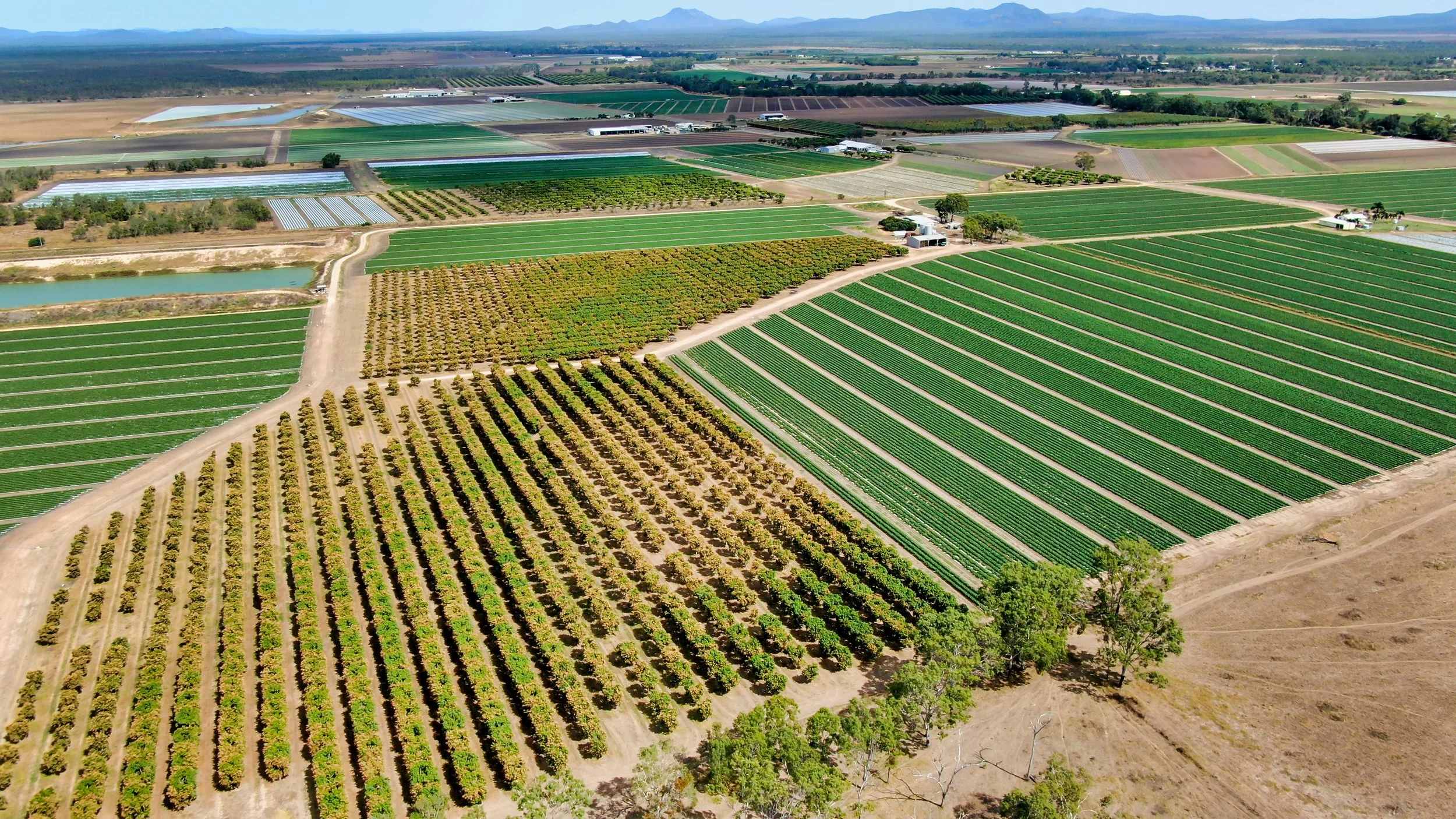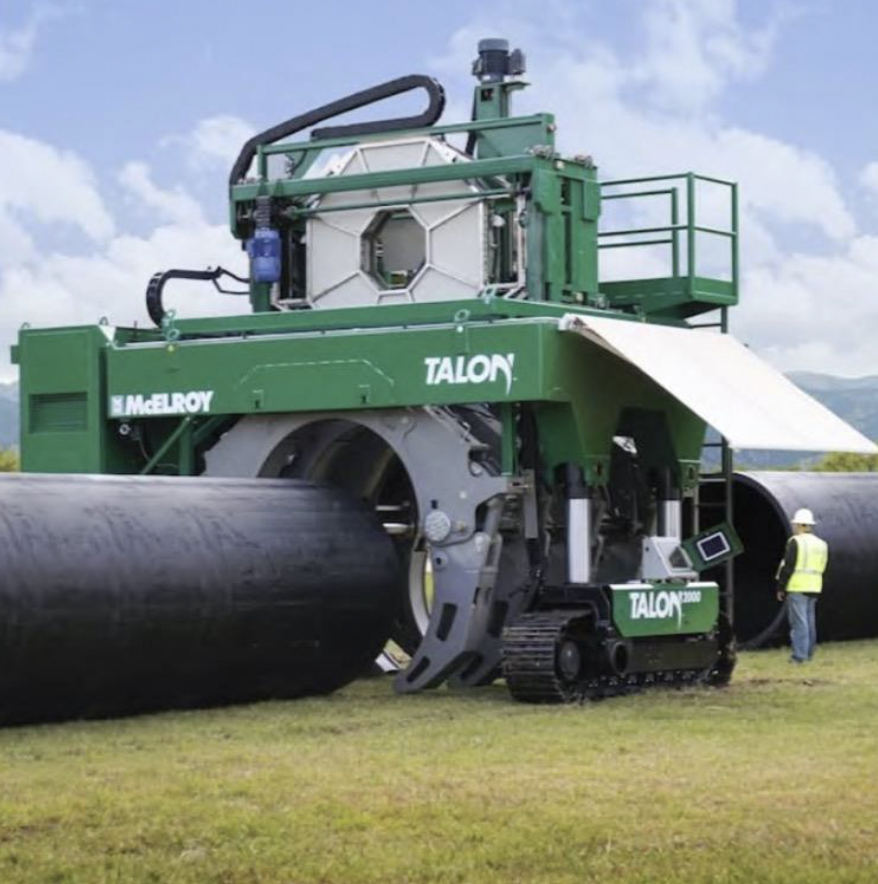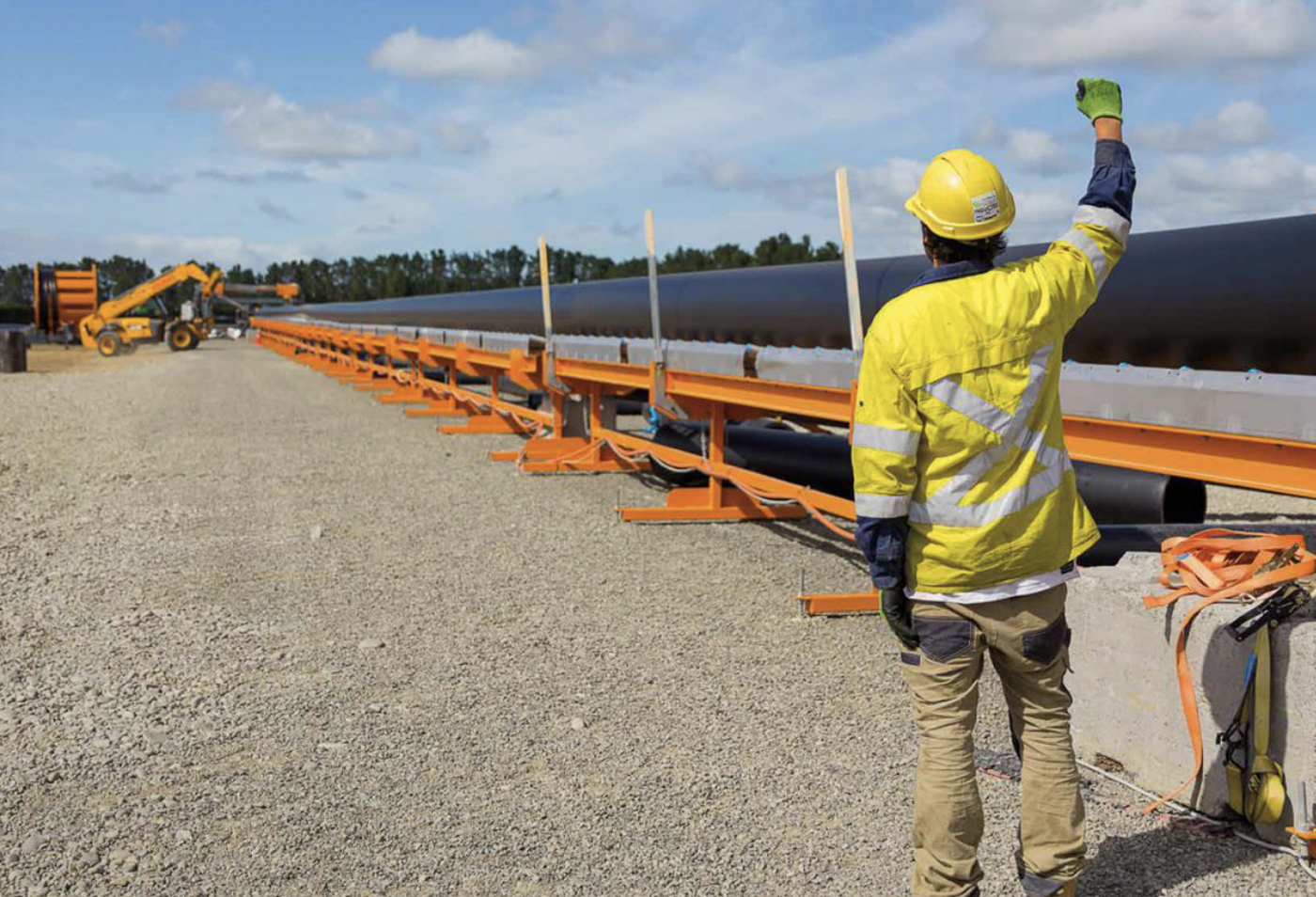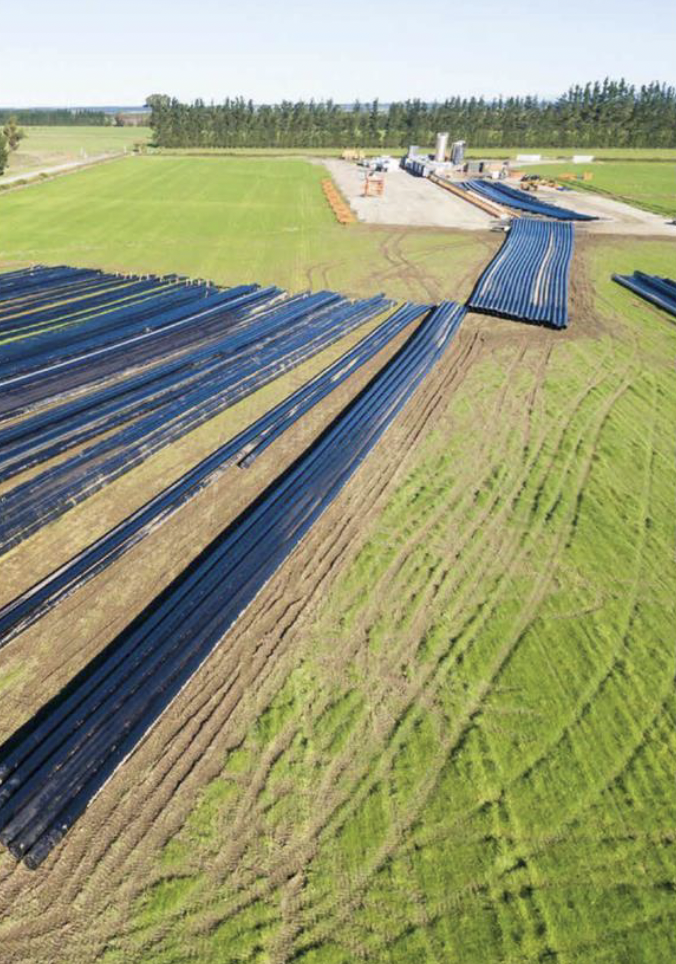Technology
We think ahead. Our water solution technology is designed to work now, and many years into the future. It will set a new precedent for horticultural standards and production in Queensland. Our pipeline will also symbolize our devotion to farmers, and genuine desire to invest in the Bowen region and all of Queensland.
On-site production guarantees minimal project road transportation time effectively reducing energy use and greenhouse gas emissions. This Australian developed and patented technology also offers a comprehensive solution that maximises pipeline integrity and delivers whole-of-life cost and environmental benefits through infrastructure stability.
This Australian technology for the onsite extrusion of the HDPE pipe in 100+ metre lengths, generates a reduction of some 5,000,000 km of B double truck movements on the roads. Use of this technology reduces the number of welds (weak points) on the pipe by 90% (saving some 11,000 welds) and reduces welding time by 36,000 hours.
"The Bowen region receives approximately 300 days of sunshine per year, making solar technology an ideal energy solution."
Our water supply system is an eco-friendly solution with opportunities to utilise vertical wind turbines, drawing renewable energy from wind blowing from any direction. Designed with helical blades, vertical turbines are much more space-efficient than horizontal turbines allowing a smooth, quiet, and efficient operation.
We seek to maximise the use of renewable energy to replace reliance on carbon-based energy sources, such as using solar power to deliver water to every crop and horticulture project. The Bowen region receives approximately 300 days of sunshine per year, making solar technology an ideal energy solution. We will be able to monitor the solar power efficiency through our cloud-based technology to ensure maximum results.
An example of reticulation construction HDPE pipe technology used in New Zealand.
The pipe distribution network consists of several pump stations and four main pipelines extending from the headrace canal down the Canterbury Plains to supply farms requiring irrigation.
The four main pipelines were constructed between May 2014 and August 2015.
With 130km of pipe to lay, contractors worked simultaneously on all main pipelines, and up to six days a week.
The pipes are buried at a depth of no less than 900mm to prevent pipe floatation and to avoid potential impact from agricultural activities.








